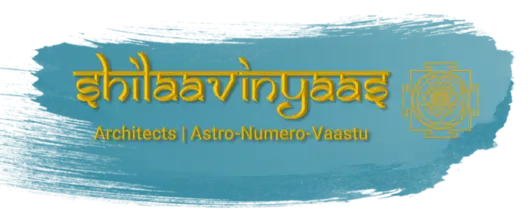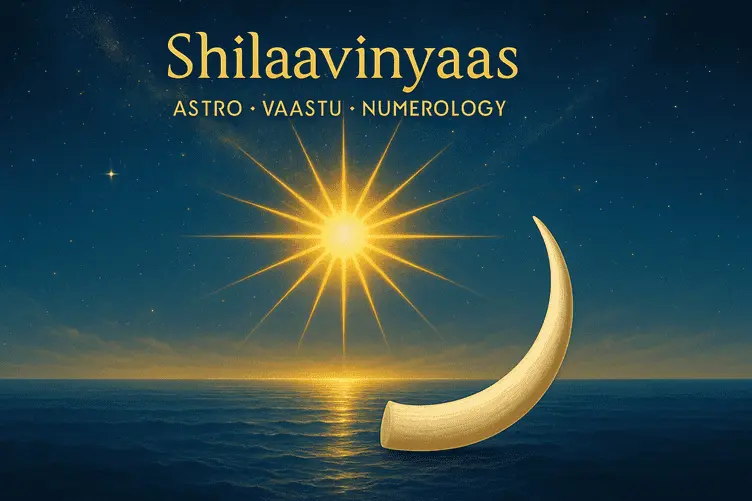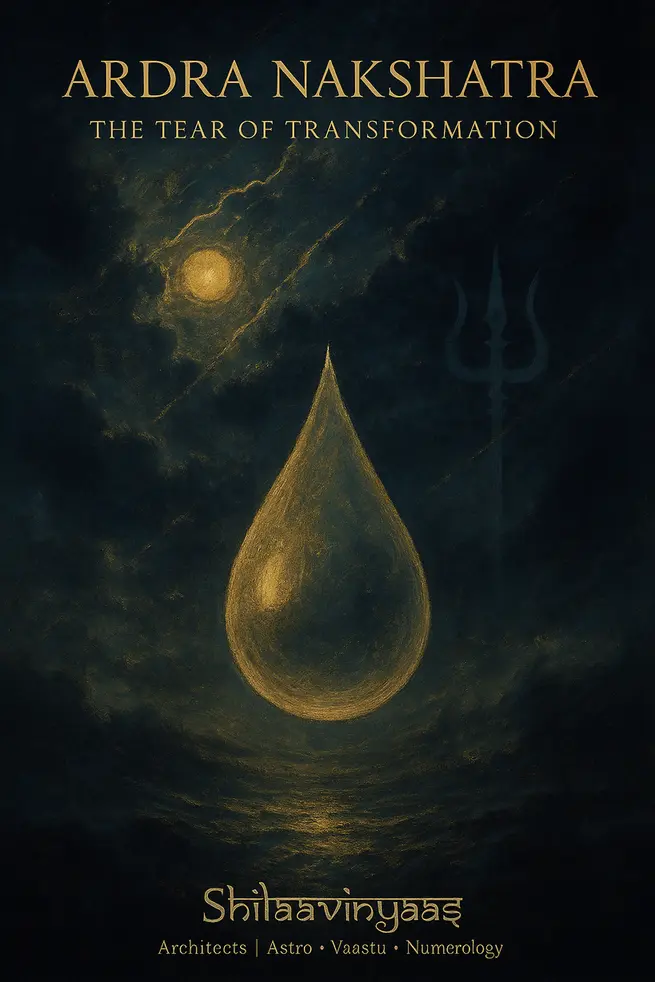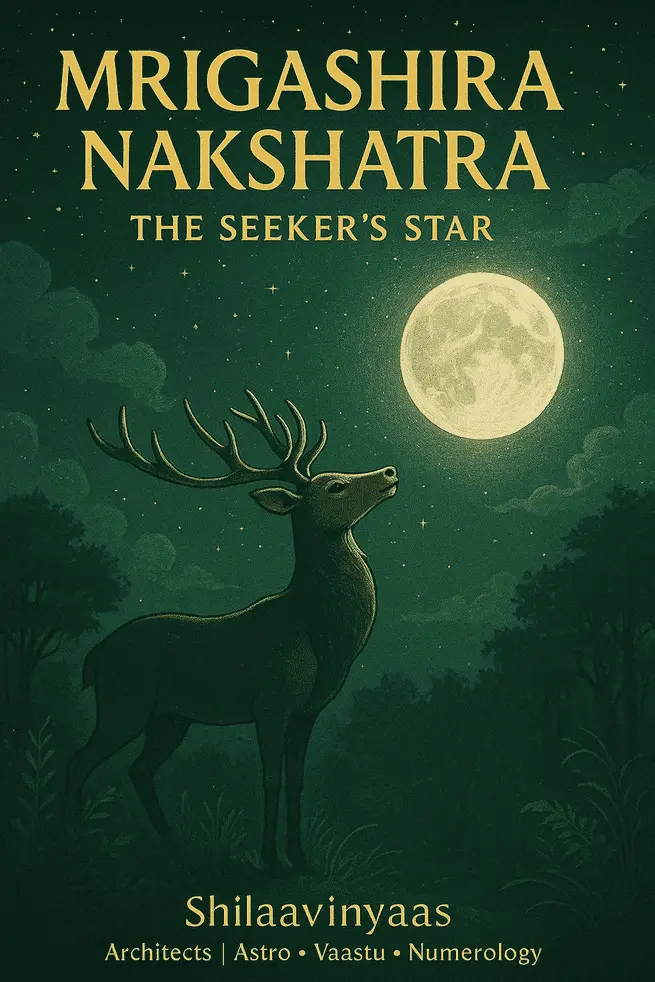Where righteousness becomes strength, and strength turns eternal.
Introduction
Among the 27 Nakshatras that weave the stellar rhythm of Vedic astrology, Uttara Ashadha stands as a pillar of truth, integrity, and permanence. Its name means “the latter invincible one” — the light that never fades.
It follows Purva Ashadha, continuing the soul’s journey from the passionate idealism of youth into the steady, luminous maturity of a dharmic life.
In Vaastu and Jyotish, this Nakshatra resonates with foundations, contracts, and acts that must last — whether it’s a marriage, a home, or a spiritual vow.
Nakshatra Insight Sheet
| Aspect | Insight |
|---|---|
| Sanskrit Name | Uttara Ashadha (उत्तराषाढा) — The Later Invincible One |
| Zodiac Span | 26° 40′ Sagittarius → 10° Capricorn |
| Ruler Planet (Graha) | ☀️ Sun — the illuminator, giver of life and authority |
| Deity | The Ten Vishvadevas — divine embodiments of Universal Virtues (Goodness, Truth, Will, Skill, Time, Desire, Firmness, Fame, Radiance, Light) |
| Symbol | Elephant’s tusk – sign of enduring strength and dharmic power |
| Element (Tattva) | Air – expansive, communicative, all-pervading |
| Guna (Quality) | Sattwic – pure, noble, truth-seeking |
| Varna | Manushya – Human; deeply involved in social and ethical conduct |
| Orientation | Upward – growth, progress, long-term vision |
| Nature / Type | Dhruva (Fixed, Permanent) – stability, legacy, and permanence |
| Associated Deity in Myth | Dhruva, the pole-star child of unwavering devotion |
| Dosha Influence | Balanced Pitta-Vata; strong fire for purpose, air for expansion |
| Body Part (Kalapurusha) | Thighs and Knees – symbol of movement, stability, endurance |
| Animal Symbol (Yoni) | Mongoose – quick, fearless, ethical fighter against illusion |
| Sounds (Pada Syllables) | Bhe, Bho, Ja, Ji – used for naming and mantra resonance |
| Tree Symbol | Jackfruit / Ashoka Tree – bearing fruits that last and nourish |
Personality & Energy
Those born under Uttara Ashadha carry dignity, calm authority, and an unshakable moral compass.
They believe in truth above convenience and prefer the long, steady road to success.
Positive Traits
- Integrity, leadership, and justice-orientation.
- Strong sense of duty and ability to guide others.
- Patience and endurance — both physical and emotional.
- Respectful, reliable, and community-minded.
Shadow Traits
- Rigidity or moral superiority.
- Over-seriousness; difficulty relaxing.
- Delay in personal happiness due to high standards.
- Can appear detached or dominant when misunderstood.
Astrological Interpretation
Uttara Ashadha straddles Sagittarius (fire) and Capricorn (earth) — blending idealism with practicality.
It represents the bridge from inspiration to institution — where ideas take structure.
- 1st Pada (Sagittarius, Sun): Heroic idealism, clarity of purpose.
- 2nd – 4th Padas (Capricorn, Saturn): Social responsibility, realism, organized effort.
Spiritually, it unites the light of the Sun (Soul) with the discipline of Saturn (Karma), creating the archetype of a Dharmic Leader — one who rules not by ego, but by example.
In Vaastu & Life Application
Uttara Ashadha governs:
- Permanent Foundations: laying stones, signing deeds, or inaugurating a temple.
- Leadership & Governance: choosing heads of institutions, starting social reforms.
- Marriage & Partnerships: vows based on commitment and longevity.
- Legal and Ethical Matters: decisions that must align with truth.
- Educational and Spiritual Acts: initiating studies or consecrating sacred spaces.
Avoid: beginnings that demand flexibility or quick endings (e.g., short-term trade, travel).
Remedies & Alignment Practices
| Aspect | Recommendation |
|---|---|
| Mantra | “Om Chham Om Jam Namah Suryaaya” – recite 108 times on Moon’s transit or Sundays. |
| Worship | Offer water to the rising Sun; recite Gayatri Mantra. |
| Deity | Surya (Sun God) & Durga Devi – for righteous strength. |
| Gemstone | Ruby (Manikya) or Sunstone – enhances authority and clarity. |
| Favorable Colors | Red – vitality ; White – purity ; Green – balance. |
| Fasting Day | Sunday – for humility and inner brilliance. |
| Direction for Success | East – source of light and new beginnings. |
Spiritual Message
Uttara Ashadha teaches that true victory is not conquest but consistency.
It is the Dharma-Shakti that sustains life when glamour fades.
Like the pole star, it asks us to remain centered amidst life’s spin — guided by truth, compassion, and patience.
Vaastu Reflection
In a Vaastu chart, placing sacred elements (like Tulsi Vriksha or Sun Yantra) in the East or North-East zone during Uttara Ashadha is considered highly auspicious for long-term stability, institutional success, and spiritual growth.
This Nakshatra is ideal for:
- Temple consecration
- Inauguration of schools or hospitals
- Start of charitable trusts or public causes
- Foundation stone of a lifelong home
Conclusion
Uttara Ashadha is the Sun’s promise of permanence.
It radiates calm power — the still flame that lights every righteous path.
Those aligned with its frequency become custodians of Dharma, upholding truth in both mundane and spiritual realms.
Leave a comment
Your email address will not be published. Email is optional. Required fields are marked *




